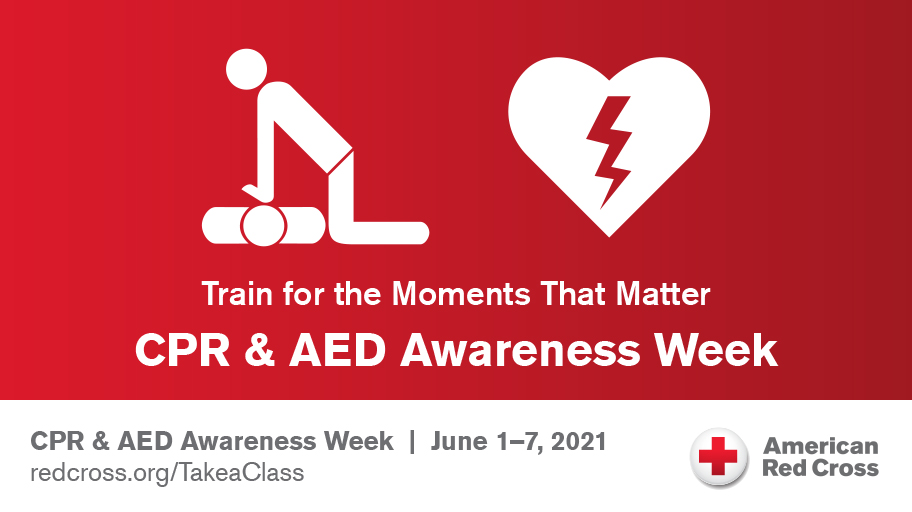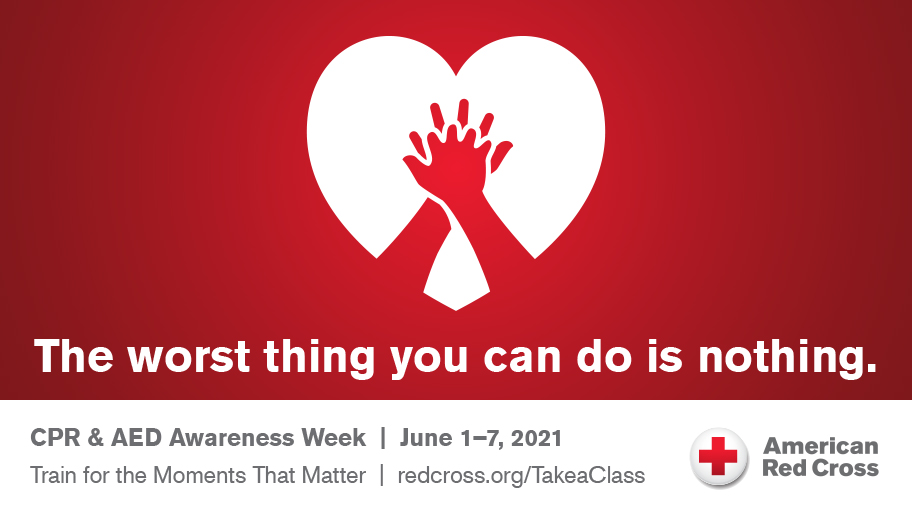The basketball referee crumbled to the floor of the court, lifeless. The game between the Glass City Wranglers of Toledo and the Jamestown Jackals of New York came to an abrupt halt, as players and spectators wondered what was wrong.
Myles Copeland did not wait.
Myles is a Toledo firefighter – and was playing with the Wranglers during his off hours when referee John Scully suffered cardiac arrest – something Myles was trained to treat. He immediately began CPR, cardiopulmonary resuscitation, performing chest compressions while awaiting the arrival of emergency medical personnel, and that likely saved John’s life.
Myles Copeland won an Acts of Courage award from the American Red Cross of Western Lake Erie for his swift intervention, as did Lt. Jim Schulty, also with the Toledo Fire Department. Jim performed CPR on a fellow hockey player after his heart stopped beating and is also credited with saving a life.
These are just two examples of the value of knowing how to perform CPR, and there’s no better time to highlight these stores, as National CPR + AED Awareness week begins today. And while Myles and Jim are professional firefighters and have had on-the-job training, anyone can be trained to help save lives with CPR and an AED.
More than 350,000 people suffer a cardiac arrest annually, but only 9% survive.
Every second counts when responding to a cardiac arrest. If you see someone suddenly collapse, call 911, send someone for the AED and begin CPR.
That’s what Lindsey and Nicole Bechter did while they were serving as referees at a volleyball court in Cuyahoga Falls last summer. A player collapsed, and the sisters took turns performing CPR until the ambulance arrived.
Even if you aren’t trained, doing chest compressions (pushing hard and fast in the center of the chest) is better than doing nothing. It’s what Jim Kuhn did. The bus driver for the city of Wadsworth helped keep a passenger alive by pushing down on the man’s chest after he collapsed when trying to board the bus last November. For their lifesaving actions, Jim, Lindsey and Nicole received Acts of Courage awards from the Red Cross of Greater Akron and the Mahoning Valley.

You can get trained by visiting redcross.org/take-a-class. At the very least, learn how to perform hands- only CPR.
Every second counts in cardiac arrest. If you see someone collapse without warning, know your “Cardiac Arrest 1‐2‐3.”
- Call 9‐1‐1 and get the AED
- Start CPR
- Use an AED
CPRSavesLives
Edited and posted by Ryan Lang, Red Cross board member and volunteer







